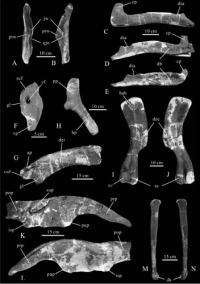Fig.1 Specimens of Wulagasaurus dongi from the Upper Cretaceous Yuliangzi Formation of Heilongjiang Province, China. Credit: XING Hai
Several hundred disarticulated bones have been recovered from a large dinosaur quarry of the Upper Cretaceous Yuliangzi Formation at the base of the Wulaga outcrop of Heilongjiang Province near the Sino-Russian boundary. Most of them are tentatively assigned to the derived lambeosaurine Sahaliyania elunchunorum, and a small number of them were referred to the hadrosaurine Wulagasaurus dongi. Researchers from Institute of Vertebrate Paleontology and Paleoanthropology (IVPP), Chinese Academy of Sciences, American Museum of Natural History, and Geological Museum of Heilongjiang Province, re-described Wulagasaurus dongi based on both original specimens and some recently recovered materials, and found Wulagasaurus shares strong morphological similarities with the North American taxa Brachylophosaurus and Maiasaura, forming a monophyletic basal clade of hadrosaurines. It is likely that this basal hadrosaurine clade originated in Asia and subsequently dispersed to North America.
Wulagasaurus displays typical features of hadrosaurine dinosaurs, such as a hatchet-shaped sternal with a distal handle-like process that is longer than the proximal plate, a long and caudoventrally tapering ventral process of the coracoid, a prominent deltoid ridge on the scapula, a moderately craniolaterally expanded deltopectoral crest on the humerus, and a slightly elevated pubic peduncle of the ischium.
Resaerchers also noted that some specimens previously referred to W. dongi, including braincases, maxillae and scapulae, actually belong to typical lambeosaurines, and revised the diagnosis of the hadrosaurine Wulagasaurus dongi.
Wulagasaurus shares strong morphological similarities with the North American taxa Brachylophosaurus and Maiasaura: a long, wedge-shaped rostral apex positioned at the level of the dorsoventral midpoint of the jugal rostral ramus; a fan-shaped caudal ramus of the jugal with a nearly straight or slightly convex caudal margin; a relatively elongate and slender ventral process of the coracoid; a weakly developed humeral deltopectoral crest that is moderately expanded craniolaterally; and an asymmetrical, strongly convex margin of the iliac supracetabular process, lacking a strong ridge connecting its caudal portion with the dorsal margin of the postacetabular process.
“Phylogenetic analysis indicates that Wulagasaurus, Brachylophosaurus and Maiasaura form a monophyletic basal clade of hadrosaurines. It is likely that this basal hadrosaurine clade originated in Asia and subsequently dispersed to North America via the Bering land bridge, following a biogeographical pattern also seen in some other hadrosaurine groups. This topology has provided valuable evidence supporting the hypothesis that the ancestral area of hadrosaurines was in Asia”, said lead author XING Hai, a paleontologist graduate student of the IVPP.
“Abundant fossil remains of hadrosaurines, including articulated skeletons, isolated bones, eggs, skin impressions, and even mummified soft tissues, have been collected in the Americas and East Asia. They preserve considerable information that is helpful in investigating mechanisms of Late Cretaceous dinosaur evolution and discussing intercontinental correlations within the terrestrial Upper Cretaceous”, said study co-author Dr. Albert Prieto-Márquez, Division of Paleontology, American Museum of Natural History, New York.
The original paper was just published in the latest issue of Vertebrata PalAsiatica 2012(2).
























